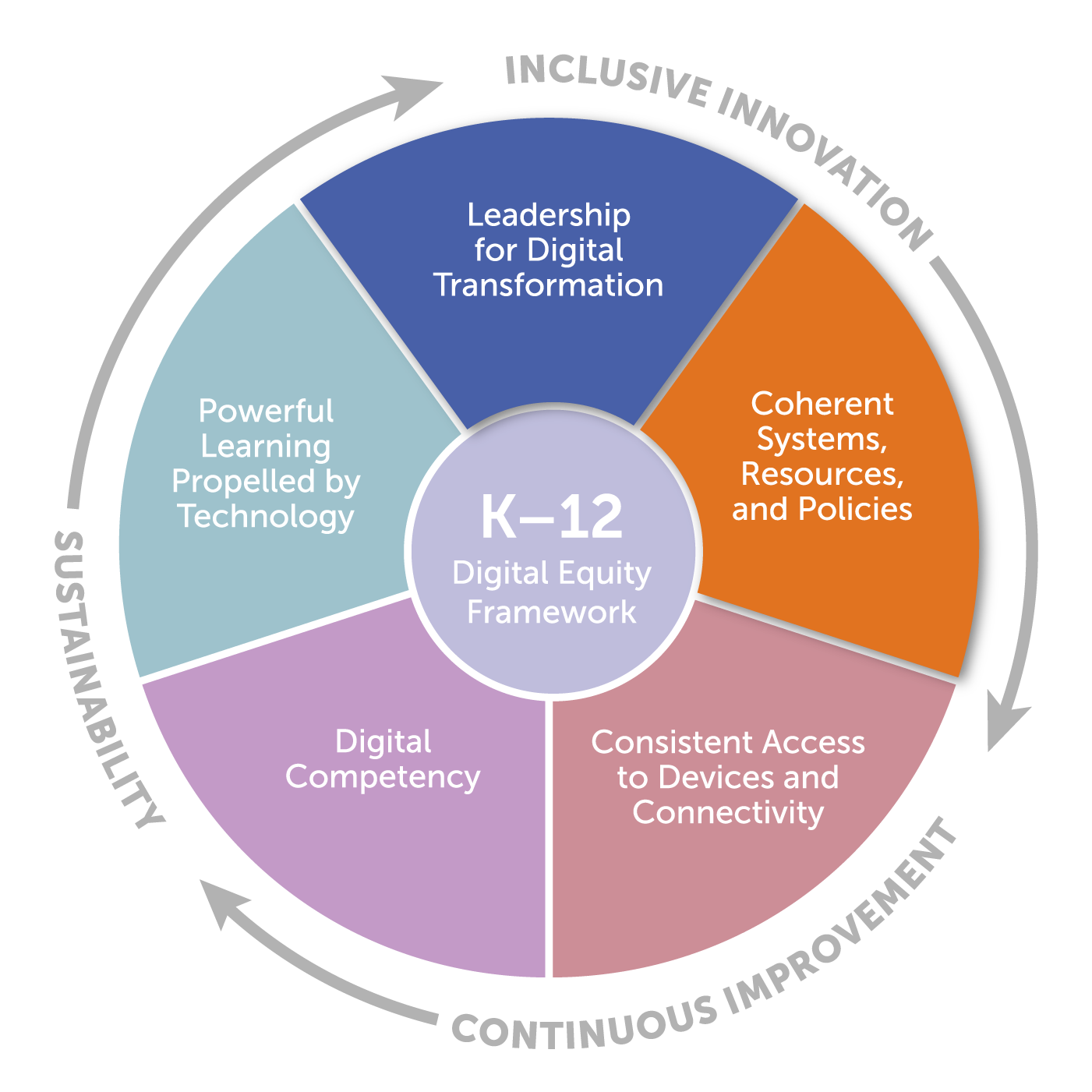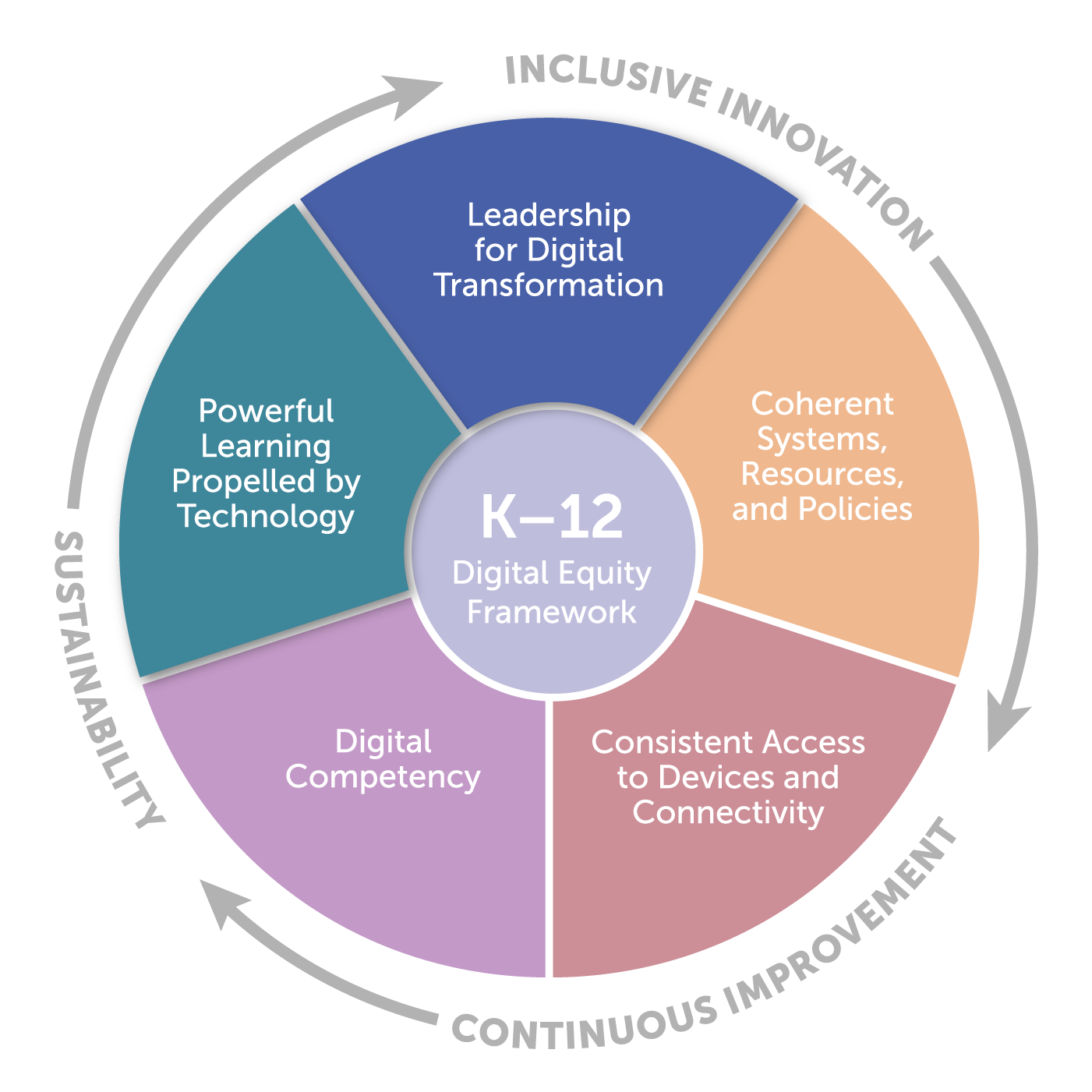Leadership for Digital Transformation refers to the strategic and inclusive guidance provided by district, school, and community leaders to enact a vision for deep technology integration. The domain sets the conditions for the type of ubiquitous learner-centered education that leverages technologies to ensure all students learn at their highest levels and achieve academic, social, and economic outcomes that are equitable.

The domain indicators provide guidance on what school and district stakeholders need to accomplish to activate the domains. Hitting these “markers” signal that schools and districts are making progress toward triggering each domain in full.
Essential Question: To what extent does your vision for technology in schools reflect the voice of all partners and members of the school community and drive toward multi-year sustainability outcomes?
Leaders create and nurture an environment that values and promotes innovation, granting educators, learners, and members of the school community the freedom and support to experiment with new ideas and technology-enhanced solutions, including AI, to improve learning outcomes and equity. This culture is demonstrated by:
Key members of the school community, including those historically underserved, are actively engaged in collaboratively developing a clear, shared vision for deep technology integration that ensures equitable learning opportunities and outcomes for all learners, as evidenced by:
The shared vision for digital equity is consistently communicated and modeled by leadership across all aspects of the education system, demonstrated through:
Completion of key milestones in the strategic plan related to digital equity, supported by:
Adoption of a learner-centered mindset across the educational community, leveraging technology to address learner variability, fostering student agency, and ensuring continuous adaptation based on learner feedback. This mindset is evidenced by the development and implementation of a Portrait of a Learner and includes:
Teachers, coaches, and leaders report high-quality, collaborative partnerships with families, communities, and public and private partnerships, that effectively advance digital equity outcomes, as evidenced by:
The Digital Equity Competencies for K-12 School Systems define what teachers, instructional technology coaches, and administrators (inclusive of district, school, and IT leaders) need to know and be able to do—and the mindsets they need to have—to activate each of the five domains collectively.
The Digital Equity Framework offers a holistic approach to bridging the digital teaching and learning divides. The framework’s emphasis on interdependence across domains ensures that all aspects of digital equity are addressed. Below are examples that highlight some of the interdependencies across multiple domains:
 Leadership for Digital Transformation and…
Leadership for Digital Transformation and…Strong leadership is essential for developing and implementing coherent systems, resources, and policies that support digital equity.
Coherent systems, resources, and policies, in turn, provide the necessary foundation for leaders to effectively enact their vision for deep technology integration.

Leadership plays a crucial role in setting the vision and creating the conditions for powerful, technology-enhanced learning experiences.
The successful implementation of powerful learning propelled by technology can demonstrate the effectiveness of leadership’s vision and strategies, building support for further digital transformation efforts.